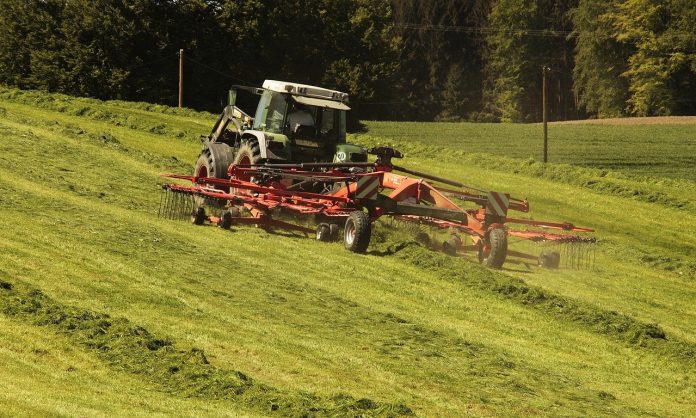Since May 21, I have had three great chances to make hay and was lucky enough to finish last week, before the rains arrived. I was lucky. I know other areas have not had a chance, or just got started.
When we finish first-cutting hay, it seems to me to be a great time to assess our pasture condition and hay supplies. We now know how much hay we have and how much more we will need. Do you or will you have enough once the first cutting is finished? Are your pastures holding up well?
Options
If you are going to have plenty of hay, can you graze some of those fields? It is always cheaper to graze than to make hay.
Speaking of hay, prices are good right now — if you don’t need the fields to graze, can you make some extra to sell, if you need the income? If you are short on hay, can you get enough in subsequent cuttings? If not, have you recently soil tested your fields? Improving fertility will help improve yields for the rest of the season.
How are your pastures holding up? So far this year, it looks like many are doing well. In my case, all my hay fields but one can be grazed, providing flexibility for either more hay production or more pasture.
When I think about other things we can do for livestock feed if it is short this winter, I believe the cheapest feed we can provide is corn stalks after harvest. Look around. Are there any corn fields in the area that could be grazed after harvest?
I have seen it done with temporary fence built in a short period of time. How about forage fields that have not been utilized from neighbors and could be grazed for very little charge?
Stockpiling and planting
The next option for additional forages is to stockpile fields to graze in the fall or early winter. All you need to do is make a final clipping, harvest or grazing of a field and let it sit and grow.
Recent research confirms that adding nitrogen fertilizer will increase yields. A good recommendation is to apply 100 pounds of urea per acre when you start to stockpile.
Generally speaking, the earlier you start to stockpile, the higher the yields will be and the lower the quality. Conversely, the later you start, the lower the yields and higher the quality. Fescue can be grazed well into the winter, but I suggest grazing orchardgrass before the end of the year. It dies back more in cold winter.
Another option is to plant something. If you have fields that need to be re-seeded, or you have small grain fields that are or will be harvested, brassicas, such as turnips, or small grains like oats and cereal rye are good options to plant later in the summer. You can also plant a combination of small grains and brassicas.
Fertility
Finally, fertility can go a long way to improving forage yields. If your pH is low, applying lime after the first cutting is a great option. If we can correct soil acidity before applying fertilizer, production will be optimized.
I have the lime truck coming in this week to finish applying lime on my hay fields now that the first cutting is finished, and I hope to fertilize and even stockpile later on in the season for added forages this year and beyond.
On my farm, I think I reach a milestone when I finish first-cutting, as it is the bulk of feed I need to make it to next year, and I feel like I have accomplished a lot. I also like to plan and assess my potential needs at this point, because the sooner we determine our needs, the more options we will have and more time to execute them.













